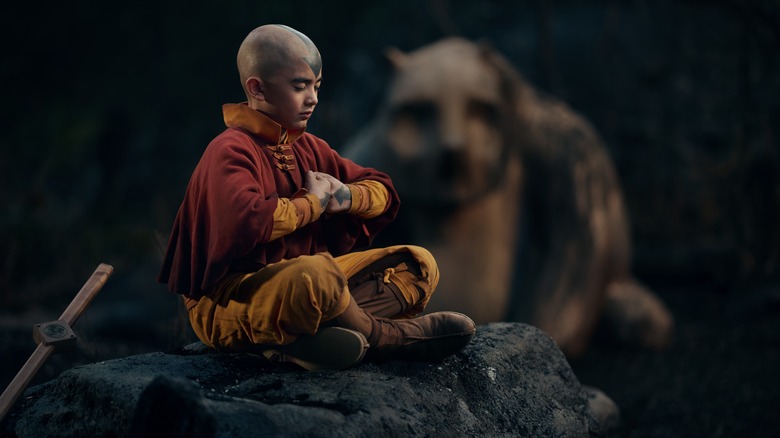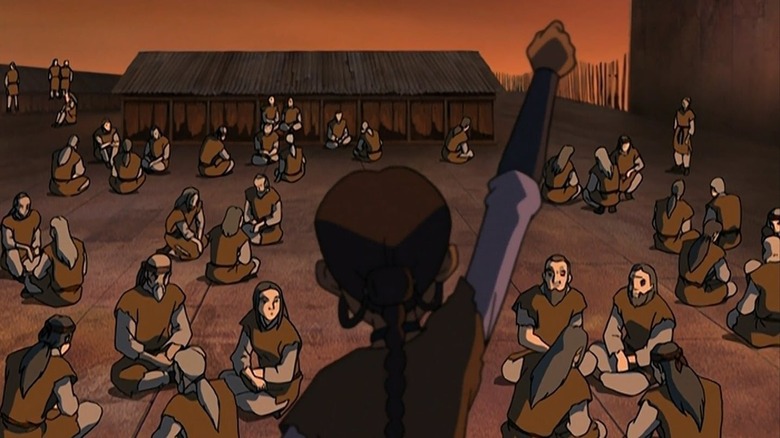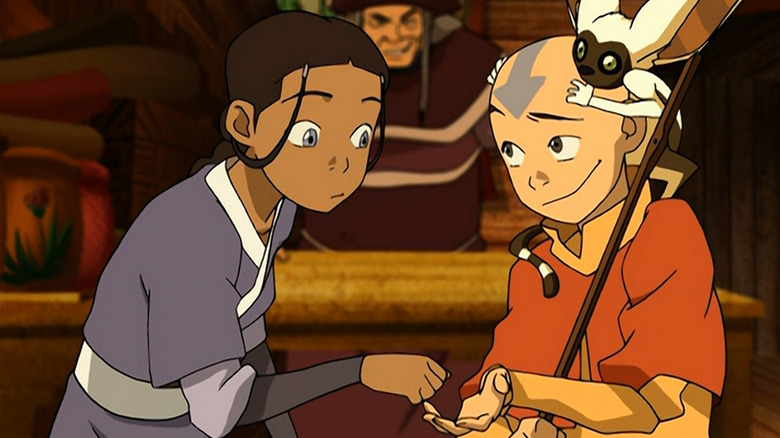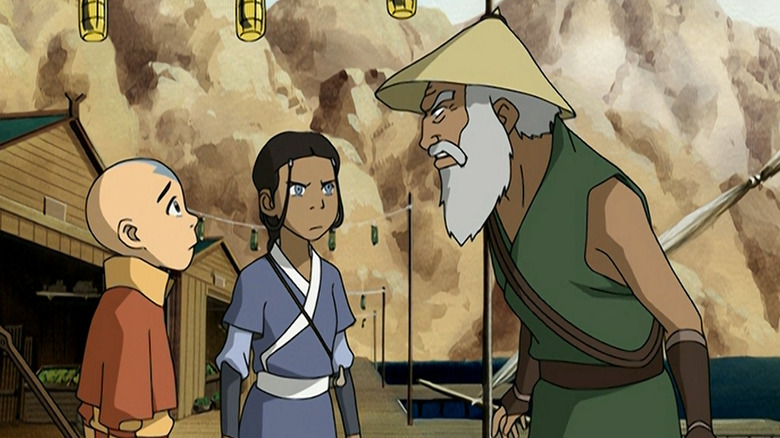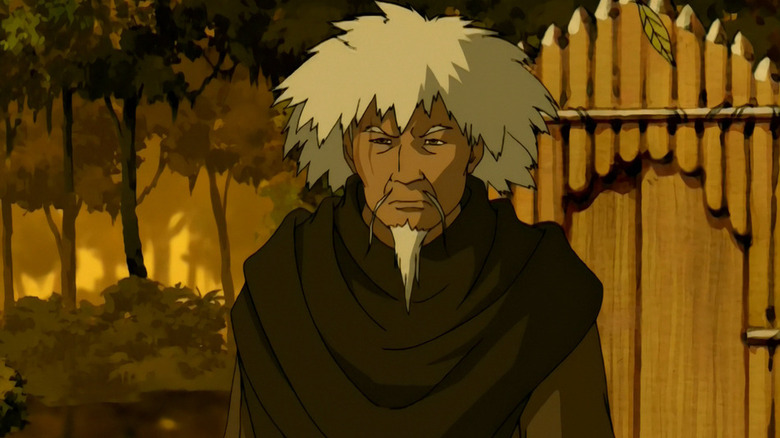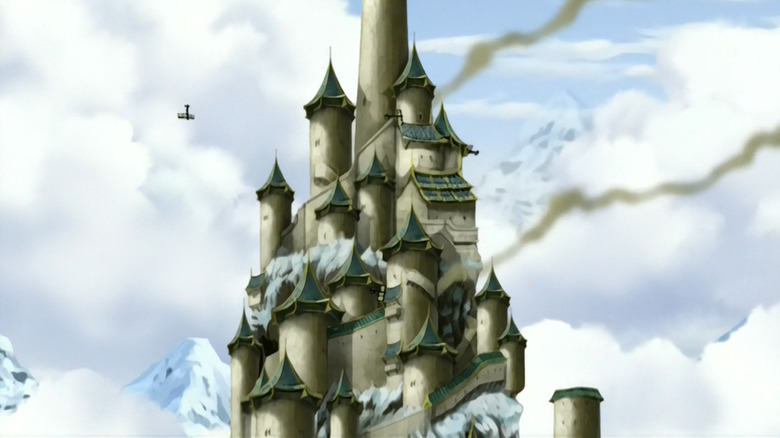Avatar: The Last Airbender: The Most Essential Episodes Netflix Didn't Include
This article contains spoilers for "Avatar: The Last Airbender."
For the first time in almost 15 years, the Aang gang is finally back at the center of the pop culture conversation. While the exact circumstances of its release are somewhat less than ideal (for more on that, check out my review for /Film here), Netflix's adaptation of "Avatar: The Last Airbender" isn't entirely without its bright spots. The new cast, which stars Gordon Cormier as the Avatar Aang, Kiawentiio as Katara, Ian Ousley as Sokka, and Dallas Liu as Zuko, are highlights and make the new show well worth a watch ... even if they're not afforded the same amount of adventures that the Team Avatar originally enjoyed in the animated show.
As one of the many changes made while bringing the material over into live-action, much of "Book One: Water" (the original's evocative subtitle for the first season) had to be compressed and streamlined into a mere eight episodes in the Netflix series. The writers, led by Albert Kim, certainly went out of their way to make sure that many of the most popular and vital moments were preserved for this new reimagining of the story. That said, not every change worked quite as well as intended and viewers might be surprised by certain episodes and moments from the original that were left out entirely.
Although "The Last Airbender" ultimately got to the same endpoint by the end of the season, both newcomers and longtime fans alike may have felt like something was missing. In moments like this, well, there's no better place to look to than the masterful animated show itself. Consider this article a companion piece, guiding viewers to all the most essential episodes from season 1 that the Netflix series didn't include.
Imprisoned
On the surface, it's pretty clear why the writers of the Netflix show chose not to adapt the events of "Imprisoned," the sixth episode of Book One. Our trio of heroes coming across an Earth Kingdom village in the middle of nowhere, in an episode featuring no major supporting characters, and centered on a relatively minor conflict in the grand scheme of things? That doesn't exactly lend itself to a more streamlined and concise interpretation of events. But for those eager for a little more exploration into Katara's motivations, this is the episode for you.
We won't spoil all of its surprises here, but rest assured that "Imprisoned" adds all sorts of world-building and crucial character moments for the entire gang — but especially for Katara. When they encounter a village under Fire Nation occupation where all the earthbenders were long ago taken captive, the thematic parallels between these innocents and the Water Tribe that Sokka and Katara left behind immediately become clear. At first, Katara urges new friend Haru to be proud of his earthbending powers rather than hide them, but this inadvertently leads to his own capture and imprisonment. Guilt-ridden but intent on freeing all the village's earthbenders, Katara leads the rescue attempt to a Fire Nation prison ship ... only to find that the townspeople have given up hope entirely during their long captivity.
Ultimately, the episode adds several important layers to Katara's arc and stands as one of the earliest stand-out moments for our favorite waterbender.
The Waterbending Scroll
To be fair, the Netflix series does incorporate elements of "The Waterbending Scroll" into the season, but only in the broadest of strokes. In both versions, Katara becomes desperate to learn more about her powers. While in the live-action show, her Gran-Gran secretly provides the answers through a scroll smuggled into Katara's backpack, the original arc sees Katara come into possession of this information by happenstance. Here, the scroll isn't just a means to an end, but a source of friction between the struggling Katara and Avatar Aang, to whom every waterbending move comes naturally. This dynamic is an early reminder that, at its heart, "The Last Airbender" is really about the growing pains involved in maturing. Petty concerns like jealousy and insecurity constantly rear their ugly heads, and our heroes must find a way to overcome these character flaws entirely on their own.
Oh, and there are also a group of swashbuckling pirates who serve as the episode's main antagonists, because who doesn't love swashbuckling pirates? Team Avatar runs afoul of these upstanding criminals, and in a departure from the new show, they go on to serve a surprisingly important purpose later on in Book One.
The Storm
Perhaps no episode exemplifies the differences between serialized and episodic storytelling better than this one. Episode 12 of the animated series, "The Storm," starts off unassumingly enough. The gang is running low on money and supplies, so Sokka accepts a temp job with a fisherman who ignores all warnings of an impending storm at sea. But where the Netflix adaptation spends the entire season focusing on Aang's guilt over disappearing from the world for a hundred years when he was needed most, the original deals with this crucial issue in the span of 25 laser-focused minutes. Upon learning who Aang really is, the fisherman angrily chides him for turning his back on people in need.
This is the episode where we first learn about Aang's backstory, told through flashbacks at the Southern Air Temple detailing the burden of responsibility thrust upon him at far too young an age. At the same time, discontent among Zuko's crew finally compels Uncle Iroh to reveal his bitter nephew's own backstory and the reason behind his facial scar. Although adapted faithfully enough in other episodes of the Netflix show, these events take on much more thematic power when juxtaposed against one another in the animated series. And it all culminates in both Aang and Sokka performing feats of heroism amid the storm raging around them. This was a significant turning point in the young season.
The Deserter
Hey, why didn't Aang ever practice firebending during any of the eight episodes of the new show? For a kid who was placed under enormous pressure to master the four elements in a tight timespan, it's a pretty reasonable concern. But where the live-action Aang only ever performed airbending, the animated Aang once leapt at the chance to learn firebending from an actual master in "The Deserter."
More than simply ticking a box off the list, however, this opportunity to learn firebending posed many more complications for the young Avatar than he ever could've imagined. After a typically reckless appearance at a Fire Nation festival, our heroes are saved by a deserter who reveals that his leader, Jeong Jeong, is a master firebender who has gained his mythic reputation by breaking away from the imperialistic Fire Nation. Reluctantly, he begins to train Aang in the art of firebending, but an accident stemming from his own impatience and lack of discipline convinces Aang to never firebend again. In this episode, Katara learns about her innate healing ability and, elsewhere, the true identity of Jeong Jeong and the shocking way he ties together with the main plot combine to make this a must-watch episode.
The Northern Air Temple
We've written much more extensively on how the adaptation chose to make its biggest change yet by combining three separate arcs into one major storyline. This loose adaptation includes episodes titled "The King of Omashu," "Jet," and "The Northern Air Temple," so consider this a three-for-one entry praising the merits of each of these essential installments of the original. The Netflix series mostly preserves the events taking place in the earthbending city of Omashu, where Aang must contend with the eccentric whims of King Bumi and the major tests he puts the young Avatar through for reasons unknown. But, in a somewhat underwhelming creative choice, the live-action show tries to tie this together with the appearances of freedom fighter Jet (played by Sebastian Amoruso) and the arc concerning Teo (Lucian-River Chauhan) and his father, the Mechanist (Danny Pudi), to mixed results.
So here's our plea to check out each of these three episodes the way they were originally envisioned. "The King of Omashu" is a much lighter and more fun-loving adventure, though one that packs a serious punch once the episode's true focus rounds into shape. "Jet" poses one of the show's more complicated moral conundrums, in which Jet's methods to strike back against the Fire Nation prove to be much too extreme. The groundwork is laid for our trio's staunch moral ideals and their refusal to compromise even in the most trying of circumstances. And in "The Northern Air Temple," Aang must reckon with how the Fire Nation turns even the most kind-hearted individuals into tools of the enemy, building to an epic battle that gives all our main characters their moment to shine.
Both versions of "Avatar: The Last Airbender" are currently available to stream on Netflix.
